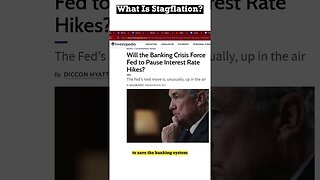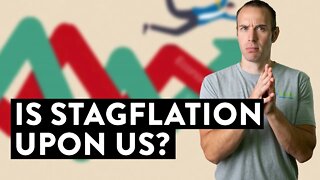#241 Stagflation
Stagflation is an economic term that refers to a situation in which an economy experiences stagnant economic growth (i.e., little or no growth in real Gross Domestic Product or GDP) along with high inflation and high unemployment. This is a rare and unusual combination of economic conditions because, in traditional economic theory, inflation and unemployment are expected to have an inverse relationship, known as the Phillips curve.
Here are the key characteristics of stagflation:
Stagnant Economic Growth: Stagflation is characterized by a period of low or negative economic growth, meaning that the economy is not expanding as it typically would during a healthy economic cycle. This can result in reduced business investment, declining consumer spending, and sluggish overall economic activity.
High Inflation: Despite the lack of economic growth, prices for goods and services continue to rise rapidly. This high inflation can erode the purchasing power of consumers and reduce their standard of living.
High Unemployment: Stagflation is also marked by elevated levels of unemployment. This is in contrast to the Phillips curve, which suggests that inflation and unemployment have an inverse relationship, meaning that when one is high, the other is low. In stagflation, both inflation and unemployment are high simultaneously.
Stagflation is a challenging economic scenario for policymakers because the typical tools used to combat inflation (such as raising interest rates) can exacerbate unemployment and further dampen economic growth. Conversely, policies aimed at boosting economic growth (such as lowering interest rates or increasing government spending) can worsen inflation.
Stagflation was a significant economic challenge in the 1970s, particularly in the United States, and it was largely attributed to a combination of factors, including oil price shocks, supply-side issues, and overly expansionary monetary policies. It led to a reevaluation of economic theories and policies, as the traditional Keynesian approach struggled to explain and address the stagflationary conditions.
Dealing with stagflation typically requires a careful balance of monetary and fiscal policies, as well as addressing underlying structural issues in the economy, such as supply constraints or productivity challenges, that may contribute to the stagnant growth and inflationary pressures.
www.antharas.co.uk/ companies website or top book distributors!
#BusinessStrategy
#Entrepreneurship
#Leadership
#Management
#Marketing
#Finance
#Startups
#Innovation
#Sales
#SmallBusiness
#CorporateCulture
#Productivity
#SelfDevelopment
#SuccessStories
#PersonalBranding
#Networking
#Negotiation
#BusinessEthics
#TimeManagement
#GrowthStrategies
#MarketAnalysis
#BusinessPlanning
#FinancialManagement
#HumanResources
#CustomerExperience
#DigitalTransformation
#Ecommerce
#SocialMediaMarketing
#BusinessCommunication
-
 10:52
10:52
Heresy Financial
2 years agostagflation
12 -
 8:18
8:18
ITM Trading
29 days ago $0.27 earnedStagflation Explained: What You Don’t Know CAN Hurt You
5441 -
 0:59
0:59
FINANCIAL ISSUES
1 year agoStagflation
21 -
 5:59
5:59
Clay Trader
2 years agoWhat is Stagflation? (Economy Basics)
181 -
 0:28
0:28
Market Evolution
1 year agoSTAGFLATION - What is it?
1 -
 0:47
0:47
The Market Sniper
1 year agoShould we be worried about hyperstagflation?
15 -
 7:49
7:49
RedpillUSAPatriots
4 months agoStagflation
2.13K -
 6:44
6:44
Clay Trader
1 year agoStagflation: Has It Started?
6.36K22 -
 9:02
9:02
Wealthion
2 years agoStagflation Is Here! High Prices & Falling Growth: What Will It Mean For Markets? | Adam Taggart
37 -
 0:24
0:24
Wealthion
1 year agoWhere is The Inflation?
39